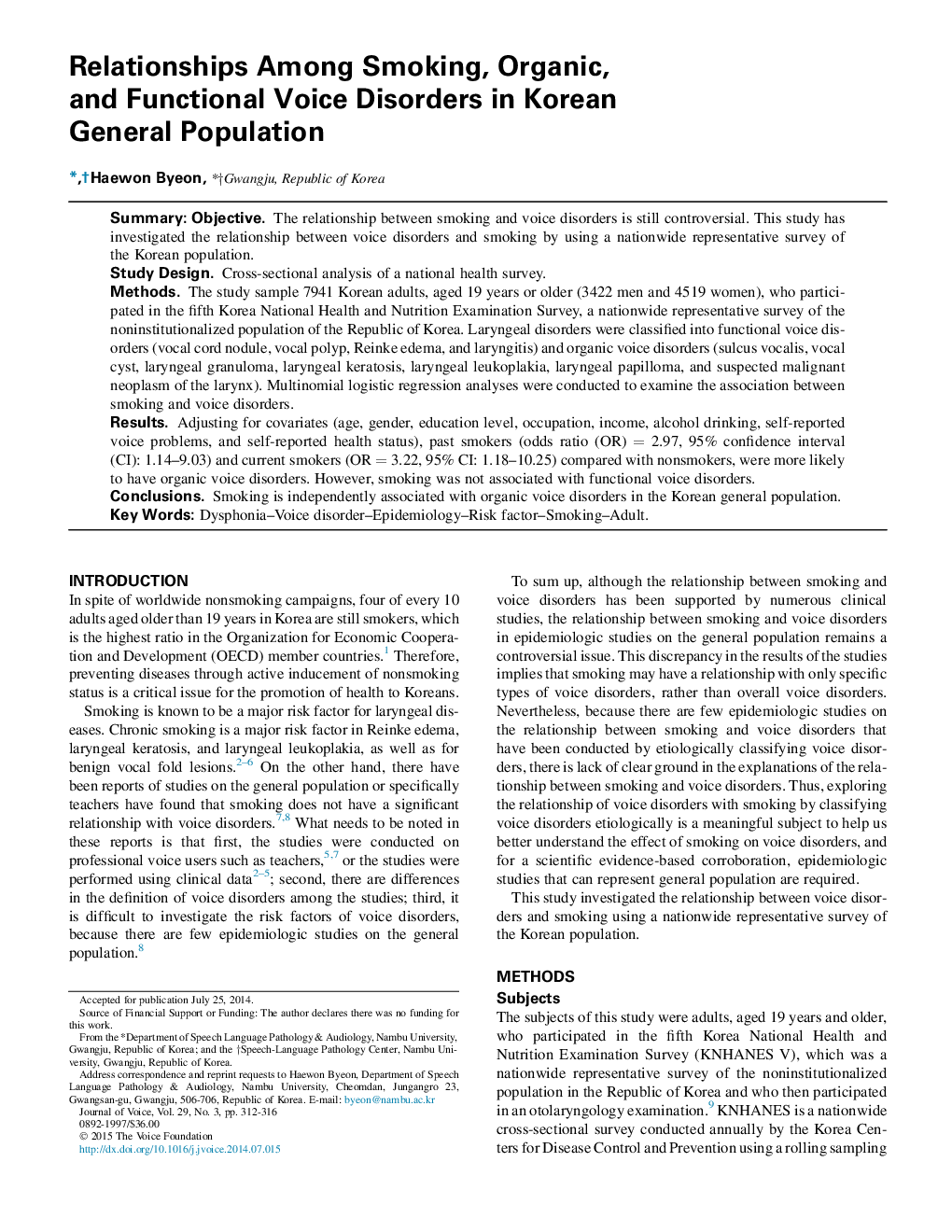| Article ID | Journal | Published Year | Pages | File Type |
|---|---|---|---|---|
| 1101407 | Journal of Voice | 2015 | 5 Pages |
SummaryObjectiveThe relationship between smoking and voice disorders is still controversial. This study has investigated the relationship between voice disorders and smoking by using a nationwide representative survey of the Korean population.Study DesignCross-sectional analysis of a national health survey.MethodsThe study sample 7941 Korean adults, aged 19 years or older (3422 men and 4519 women), who participated in the fifth Korea National Health and Nutrition Examination Survey, a nationwide representative survey of the noninstitutionalized population of the Republic of Korea. Laryngeal disorders were classified into functional voice disorders (vocal cord nodule, vocal polyp, Reinke edema, and laryngitis) and organic voice disorders (sulcus vocalis, vocal cyst, laryngeal granuloma, laryngeal keratosis, laryngeal leukoplakia, laryngeal papilloma, and suspected malignant neoplasm of the larynx). Multinomial logistic regression analyses were conducted to examine the association between smoking and voice disorders.ResultsAdjusting for covariates (age, gender, education level, occupation, income, alcohol drinking, self-reported voice problems, and self-reported health status), past smokers (odds ratio (OR) = 2.97, 95% confidence interval (CI): 1.14–9.03) and current smokers (OR = 3.22, 95% CI: 1.18–10.25) compared with nonsmokers, were more likely to have organic voice disorders. However, smoking was not associated with functional voice disorders.ConclusionsSmoking is independently associated with organic voice disorders in the Korean general population.
